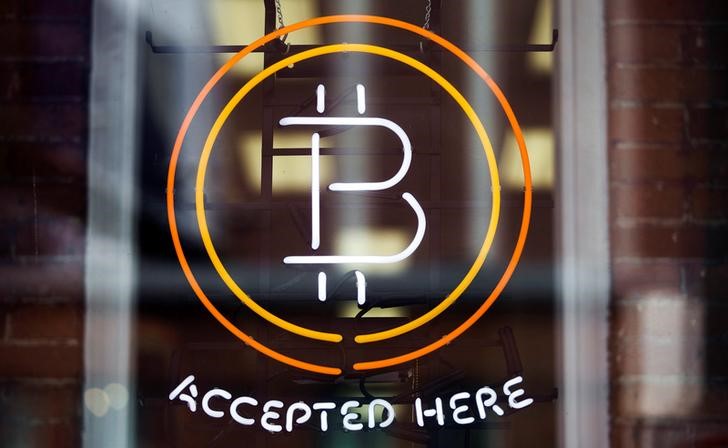(Bloomberg) -- Interest in Bitcoin has waned since the golden days of 2021, with prices and volume slumping, and online searches nosediving. But one corner of the derivatives market has been a standout.
Bitcoin perpetual contracts -- which, unlike traditional calendar futures, don’t expire -- have long been a crypto retail-investor favorite, with a bigger number of professional and institutional traders also shifting toward them and away from traditional calendar futures. Such contracts have grown to account for around 66% of open interest and roughly 93% of trading volume, according to data from Glassnode.
Traders say these instruments mimic the spot market, and are easy to use and access on exchanges. And their dominance has ballooned as they’ve become the preferred source of leverage, according to the researcher.
“Perps are pretty much like spot,” said Darius Sit, co-founder of Singapore-based crypto trading shop QCP Capital. “You take less forward risk,” he said, adding that his firm does almost all of its futures trading in perpetual swaps.
Traders say another factor contributing to the growing dominance of perps, as they’re known, is that the so-called cash-and-carry trade in the crypto space has become less attractive.
In the Bitcoin futures market, the cash-and-carry arbitrage, a market-neutral strategy, has been one of the most popular trades used by pros looking to take advantage of the inefficiencies between the spot and futures market. During a bullish stretch, the strategy, which includes both a long position in the spot market and a short position in calendar futures, generates nearly risk-free returns for traders. But today, as the market has turned more bearish, such returns have narrowed dramatically. According to crypto data-provider Skew, Bitcoin futures annualized on a rolling three-month basis, or the price difference between the prices of futures contract and the spot, remains low, with an average of 2.57% as of May 24 on major exchanges.
To traders like Sit, with the premium on Bitcoin calendar futures coming down dramatically, it’s natural to see perpetual swaps become more favored.
Reed Werbitt, who is the head of cash trading at Genesis, says that given macro uncertainties and a risk-off mentality, traders are “less likely to express market views with the use of leverage.”
“Until there is a structural shift in sentiment, the carry trade is not very attractive compared to other opportunities in the ecosystem that yield considerably more,” he said. Meanwhile, liquidity in the perpetuals space is “deep,” and “assuming collateral management is efficient, they can be very effective tools for traders. Hence, perps are absorbing a significant amount of liquidity.”
The Bitcoin futures market is an important part of the trading ecosystem -- volumes there far surpass trading in the coin’s spot market, and derivatives products tend to be highly popular on exchanges.
The perpetual contract was first introduced by crypto exchange BitMEX in 2016. Exchanges use the so-called funding rate -- or the cost to trade -- to tether the contracts to their underlying spot price. When the rate is positive, those who hold long positions are paying interest to investors who are short, and vice visa. The product originally gained popularity among retail traders given its simplicity, and many exchanges followed BitMEX with their own perpetual products.
“Crypto traders have a tendency to prefer simple products, ones that lack life-cycle events,” meaning expirations, said John Kramer, who’s leading derivatives, over-the-counter and decentralized-finance trading at crypto market-maker GSR. “That way you can set and forget a position if you so choose, rather than having to roll your futures positions.” Perpetual swaps are the most actively traded product at GSR, which is a major liquidity provider for it.
To be sure, though perpetuals have become super popular, the broader market is still mired in a downturn. Open interest -- or the amount of open contracts -- tends to be high during bullish periods because rising prices attract speculators to the market. But OI has declined roughly 40% since the fall. Aggregate futures trading volume has also declined -- during the first half of 2021, it was typical to see trading volumes between $70 billion to $80 billion per day. As of the end of April, that had dropped by roughly 60% to around $30 billion daily, according to Glassnode, though it ticked up amid the last few weeks’ volatility.
Meanwhile, the funding rate on perpetuals has turned mostly negative across exchanges offering perp swaps for Bitcoin. Annualizing the funding rate and comparing it to the three-month rolling basis available in calendar futures suggests a reason why capital has been flowing out of Bitcoin: yields available in futures have compressed to around 3% -- that’s comparable to yields on 10-year U.S. government bonds. Bitcoin was little changed at $29,535 on Wednesday.
“It is likely that declining trade volumes and lower aggregate open interest is a symptom of capital flowing out of Bitcoin derivatives, and toward higher yield, and potentially lower perceived risk opportunities,” said James Check, lead analyst at Glassnode.
The crypto derivatives space had been nirvana for thrill-seeking traders who thrive on volatility. Many had been drawn to crypto markets precisely because wild swings provided ample opportunity to make money. But now, they might look for opportunities elsewhere -- wherever yields might be more attractive.
Dan Gunsberg, co-founder of Hxro Network, a decentralized derivatives primitive, says volatility is multiple levels higher than in equities markets. “It’s unlikely that we see a long-term permanent dampening of volatility to where it’s reaching equity-vol levels,” he said by phone. “Crypto is still very early in that sense,” he said, adding that even compressed yields might not necessarily be a bad thing. “There’s still significant trading opportunity. It’s just not as volatile as it may have been a year ago.”
(Adds the price of Bitcoin.)
©2022 Bloomberg L.P.
